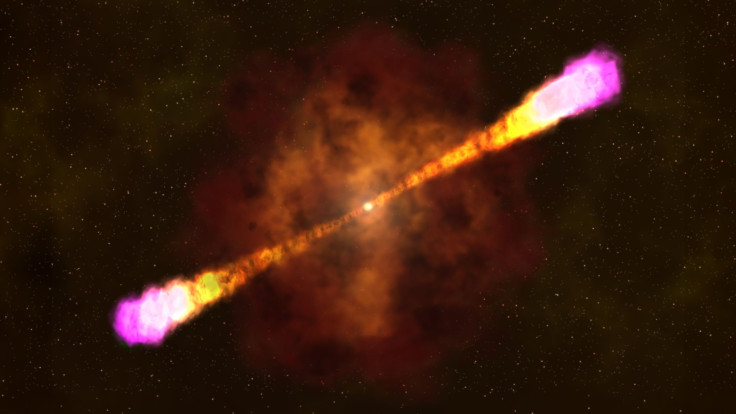Gamma-Ray Bursts, The Universe’s Most Powerful Explosions, Finally Seen In Detail

For something that is considered the most powerful and energetic explosion in the known universe, gamma-ray bursts (GMB) last a very short time, making it very difficult for astronomers to observe them in detail. However, an international team of scientists has managed to capture a GMB — which is thought to occur when a massive star collapses into a neutron or quark star or a black hole, or when two neutron stars merge — in unprecedented detail.
In a research paper to be published Thursday in the journal Nature, the astronomers reveal key findings from their observation of a GMB event named GRB160625B. The observations showed the team “the initial ‘prompt’ phase of gamma-ray bursts and the evolution of the large jets of matter and energy that form as a result of the burst,” according to a statement released Wednesday by the University of Maryland.
An assistant research scientist from the university’s department of astronomy, Eleonora Troja, was lead author of the Nature paper titled “Significant and variable linear polarization during the prompt optical flash of GRB 160625B.”
Read: Was This Short Gamma-Ray Burst Linked To Discovery Of Gravitational Waves?
To give some context for how powerful these explosions can be, Troja said in the statement: “Gamma-ray bursts are catastrophic events, related to the explosion of massive stars 50 times the size of our sun. If you ranked all the explosions in the universe based on their power, gamma-ray bursts would be right behind the Big Bang. In a matter of seconds, the process can emit as much energy as a star the size of our sun would in its entire lifetime. We are very interested to learn how this is possible.”
The observations made by Troja and her team suggest that as a dying star is collapsing into a black hole, it first produces a strong magnetic field. Later, the magnetic effect is reduced and replaced by matter, which starts to dominate the energy emission jets, with a weak magnetic field sometimes surviving in the jet. Earlier theories usually went with a scenario that involved either only magnetic fields or matter.
Another finding suggests that the radiation produced by an electron’s acceleration along a circular path — called synchrotron radiation — is responsible for the ‘prompt’ phase of a GMB, which is the initial, extremely bright phase of the event.
Read: Brightest Gamma-Ray Binary Found In Nearby Galaxy
“Our study provides convincing evidence that the prompt gamma-ray burst emission is driven by synchrotron radiation. This is an important achievement because, despite decades of investigation, the physical mechanism that drives gamma-ray bursts had not yet been unambiguously identified,” Troja said in the statement.
GMBs can last anywhere from a few milliseconds to a few hours. They are usually billions of light-years away from Earth, and none have originated within the Milky Way. Observations of GRB160625B were made using a large number of both ground telescopes around the world and space telescopes orbiting Earth to capture different wavelength of electromagnetic radiation.
© Copyright IBTimes 2025. All rights reserved.





















